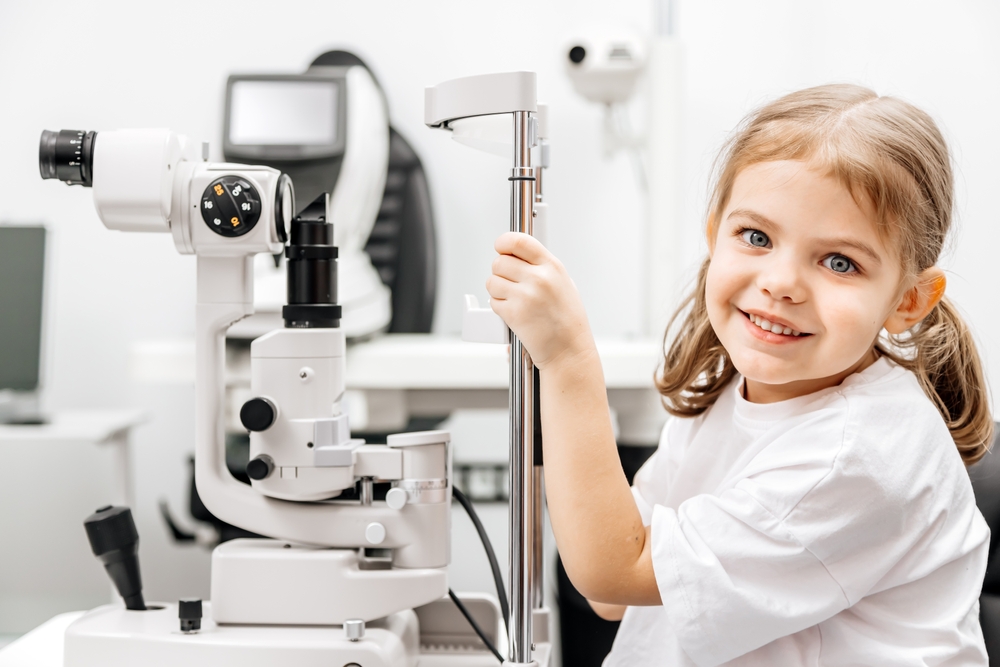Address:
26400 Kuykendahl Rd. Suite A190
The Woodlands, TX 77375

The parts of a comprehensive eye examination vary according to the patient's age, date of last exam, and other factors. Not all parts of the eye exam may be needed or performed, but the first part of the eye exam will include documenting medical history. Here are some eye and vision tests that are likely to be encountered during a comprehensive eye exam:
Visual acuity tests measure the sharpness of vision and are usually performed using a projected eye chart to measure the distance visual acuity and a hand-held small acuity chart to measure the near vision (for reading).
A screening test that checks the color vision is often performed early in a comprehensive eye exam to rule out color blindness.
A test used to assess strabismus or a more subtle binocular vision problem that could cause eye strain or amblyopia (lazy eye).
Ocular motility testing is performed to determine how well eyes can follow a moving object and/or quickly move between and accurately fixate on two separate targets.
This is used to test perception of depth and 3-dimensional structure obtained on the basis of visual information deriving from two eyes by individuals with normally developed binocular vision.
This test is used to estimate which lens powers will best correct distance vision. Based on the way the light reflects from the eye, the doctor is able to obtain an approximation of the eyeglass prescription. This test is useful for children and patients who are unable to accurately answer the doctor's questions.
This is the test used to determine the exact eyeglass prescription.

Autorefractor or aberrometer may be used to automatically estimate the eyeglass prescription. This is helpful for determining an eyeglass prescription for young children and other patients who may have trouble sitting still, paying attention and providing the feedback that the doctor needs to perform accurate manual refraction. They also save time as they take only a few seconds.
A slit lamp is a binocular microscope (or biomicroscope) used to examine the structures of the eye under high magnification, including eyelids, cornea, conjunctiva, iris, and lens. With the help of a hand-held lens, the doctor may also use the slit lamp to examine structures located farther back in the eye, such as the retina and optic nerve.
The slit lamp exam can be used to detect a wide range of eye conditions and diseases, including cataracts, macular degeneration, corneal ulcers, and diabetic retinopathy, etc.
Testing for glaucoma typically begins with measuring the pressure inside the eyes. This can be done by the "puff-of-air" test, based on the eye's resistance to the puff of air, the machine calculates intraocular pressure (IOP).
High eye pressure patients may be at risk for or have glaucoma. The test is completely painless, and the tonometer does not touch your eye.
To obtain a better view of the eye's internal structures, the eye doctor instills dilating eye drops to enlarge the pupils which usually takes about 20-30 minutes to start working. When pupils are dilated, eyes will be sensitive to light (because more light is getting into the eyes) and you may notice difficulty focusing on objects up close. These effects can last for several hours, depending on the strength of the drops used.
This test checks for the possible presence of blind spots (scotomas) in the peripheral (side) vision by performing a visual field test. These blind spots can originate from eye diseases like glaucoma or may help identify specific areas of brain damage caused by a stroke or tumor.
A comprehensive eye exam can take 1 hour or longer, depending on the number and complexity of tests required to fully evaluate vision and the eyes health. If the eyes are dilated, at least a 90-minute appointment should be planned.
Many patients are able to drive themselves after having their eyes dilated, but it is important to remember that eyes will be sensitive to light and vision may be blurry and you should wear sunglasses after your exam.
For your safety, if you do not feel comfortable driving, arrange for someone to drive you home.